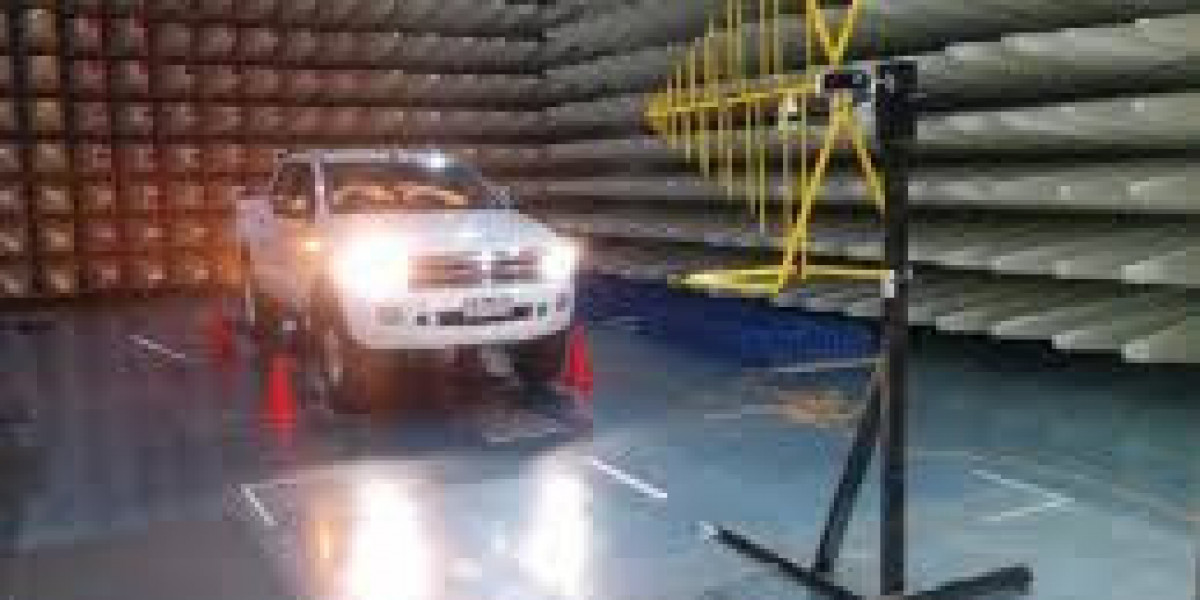In today’s automotive industry, vehicles are becoming more technologically advanced than ever before. With features such as advanced driver-assistance systems (ADAS), infotainment systems, electric drivetrains, and autonomous driving technologies, the complexity of automotive electronics is skyrocketing. While these innovations bring convenience and safety, they also introduce a critical challenge: electromagnetic interference (EMI). This is where Automotive EMC Testing plays a crucial role.
What is Automotive EMC Testing?
Automotive EMC testing is a process used to ensure that a vehicle’s electronic systems function correctly without causing or being affected by electromagnetic disturbances. EMC testing evaluates both:
Emission: Ensuring the vehicle does not emit electromagnetic waves that interfere with other electronics.
Immunity (or susceptibility): Ensuring the vehicle’s electronics can withstand electromagnetic disturbances from external sources, such as radio transmitters, lightning, or other electronic devices.
Why Automotive EMC Testing is Critical
Modern vehicles contain dozens of electronic control units (ECUs), sensors, and wireless modules. A minor electromagnetic interference can lead to:
Malfunctioning safety systems like ABS or airbags.
Malfunctions in navigation, infotainment, or telematics systems.
Failures in electric vehicle power electronics, affecting battery management and charging systems.
Unexpected vehicle shutdowns or erratic behavior.
Ensuring EMC compliance not only guarantees safety and reliability but also meets regulatory standards in different regions worldwide.
Key Automotive EMC Standards
Automotive EMC testing must adhere to strict international standards, including:
ISO 11452: Testing of vehicle components for immunity to electromagnetic interference.
ISO 7637: Evaluates electrical disturbances from conduction and coupling in vehicles.
CISPR 25: Governs radio-frequency emissions from vehicles.
SAE J1113: Provides testing guidelines for electrical disturbances and immunity.
Compliance with these standards is mandatory for vehicle manufacturers and suppliers to ensure product safety and market acceptance.
Types of Automotive EMC Testing
Automotive EMC testing can be broadly categorized into conducted and radiated tests:
1. Conducted Emission & Immunity Testing
Conducted Emission Testing measures unwanted signals traveling along wiring harnesses or power lines.
Conducted Immunity Testing simulates electrical disturbances on power and signal lines to ensure components can withstand interference without malfunctioning.
2. Radiated Emission & Immunity Testing
Radiated Emission Testing checks for electromagnetic energy emitted by the vehicle into the surrounding environment.
Radiated Immunity Testing exposes the vehicle or component to external electromagnetic fields to test resilience against interference from radio waves, cell towers, or radar systems.
3. Specific Vehicle Tests
Transient Testing: Simulates sudden voltage spikes or dips, such as load dump or startup conditions.
Electrostatic Discharge (ESD) Testing: Checks the vehicle’s ability to resist static electricity impacts.
Magnetic Field Testing: Evaluates the effects of strong magnetic fields on sensitive electronics.
Automotive EMC Testing Process
Pre-Testing and Planning: Identify components, circuits, and systems that require testing.
Laboratory Setup: Use shielded rooms (anechoic chambers) and specialized equipment like spectrum analyzers and signal generators.
Test Execution: Conduct both emission and immunity tests according to international standards.
Data Analysis: Compare measured results with standard limits.
Corrective Measures: If failures occur, implement shielding, filtering, or grounding solutions.
Certification: Once compliant, the vehicle or component can be approved for production and market release.
Advantages of Automotive EMC Testing
Enhanced Safety: Ensures critical systems like airbags, ABS, and autonomous features operate reliably.
Regulatory Compliance: Meets global standards for vehicle electronics.
Reduced Warranty Costs: Minimizes risks of electronic failures post-production.
Improved Customer Satisfaction: Provides reliable and interference-free user experience.
Supports Innovation: Allows safe integration of advanced technologies like EV powertrains, autonomous systems, and IoT connectivity.
Future Trends in Automotive EMC
As the automotive industry evolves, EMC testing is becoming more sophisticated:
Electric Vehicles (EVs): High-power batteries and inverters introduce unique EMC challenges.
Connected Vehicles: 5G, V2X (Vehicle-to-Everything), and IoT devices require rigorous EMC compliance.
Autonomous Driving Systems: Safety-critical sensors like LiDAR, radar, and cameras demand near-zero tolerance for electromagnetic interference.
Simulation-Based Testing: Advanced EMC simulations reduce the cost and time of physical testing while improving accuracy.
Conclusion
Automotive EMC testing is no longer optional—it is a cornerstone of vehicle safety, reliability, and compliance. With vehicles becoming more electronically complex, thorough EMC testing ensures that drivers, passengers, and the environment remain protected from electromagnetic hazards. For automotive manufacturers, investing in EMC testing not only safeguards technology but also strengthens brand reputation in an increasingly competitive industry.








